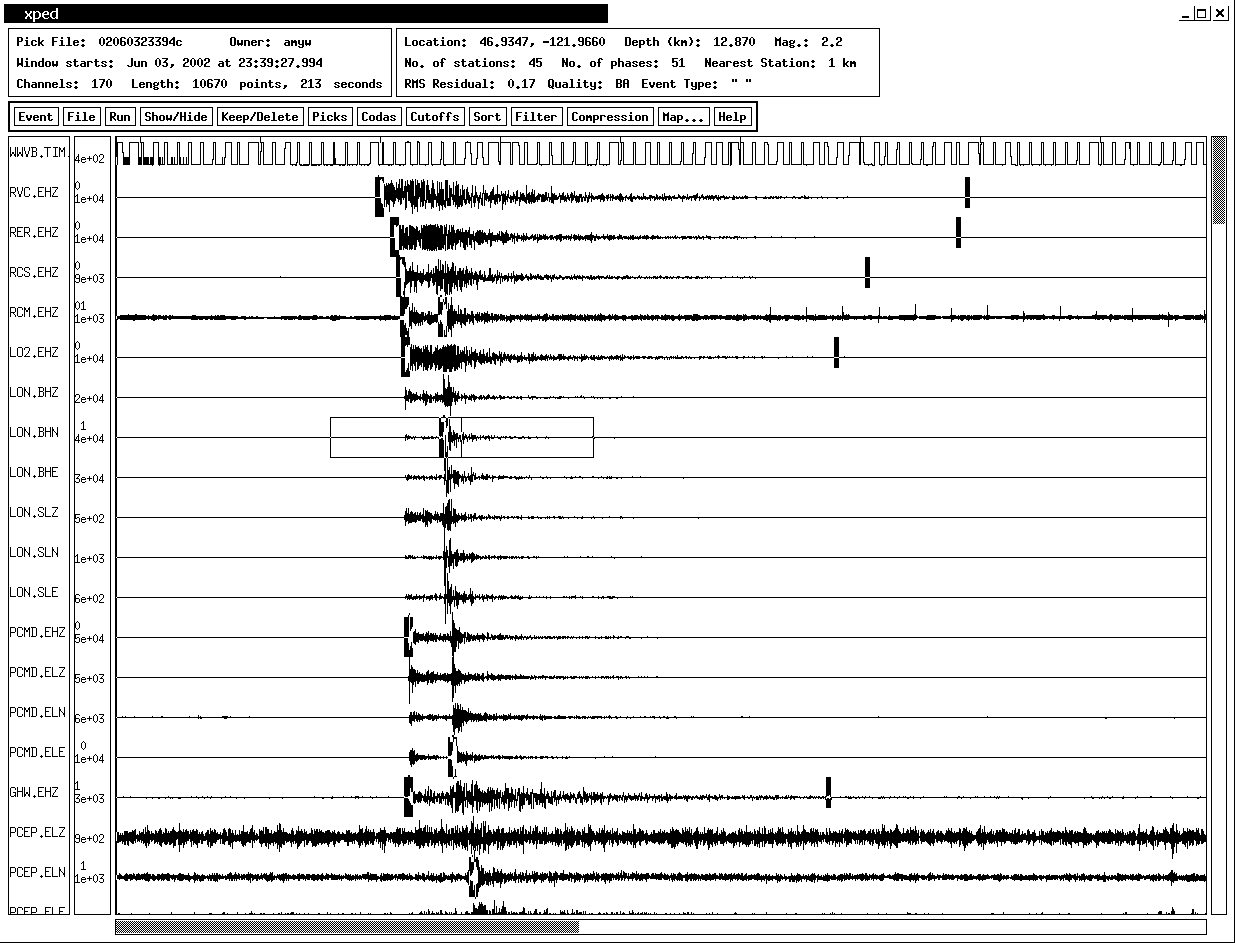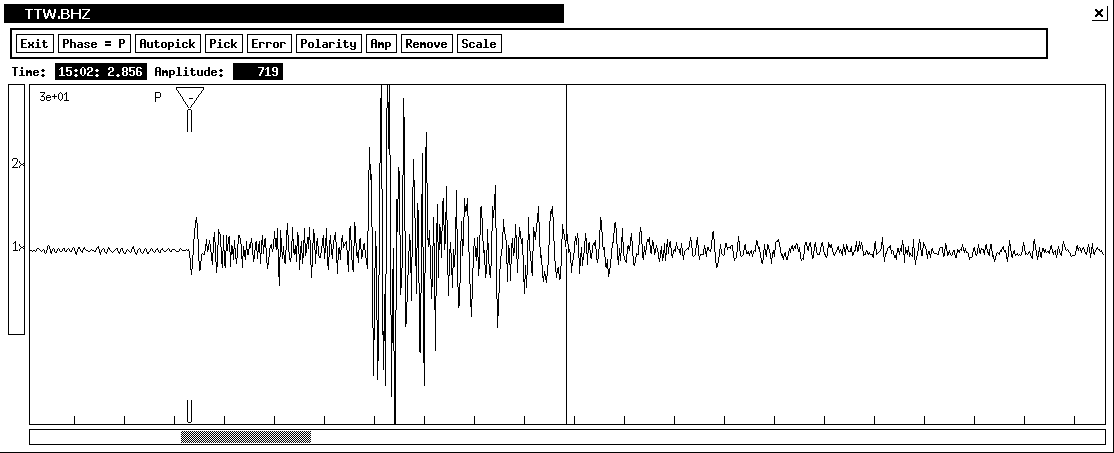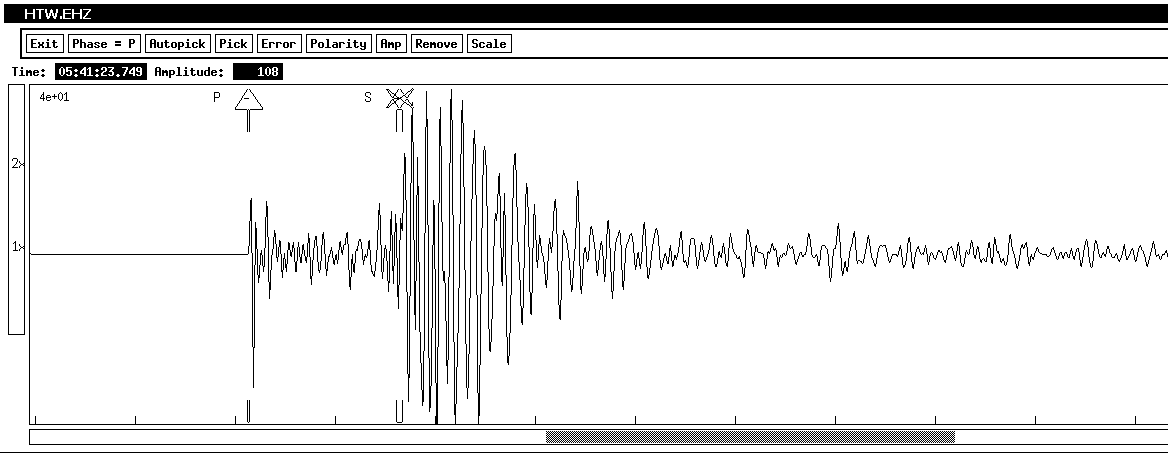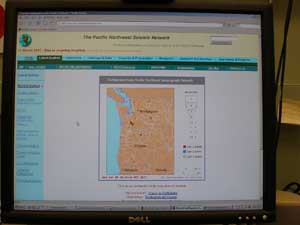Virtual Tour > Intro > What Causes an EQ > How we locate EQ's > Equipment > Volcanoes > The End!
|
Seismic Analysis

Seismic Analyist |
After
ground motion has been detected by seismographs, the
information is sent to our computer system. For any
event, an upward of 200 seismographs may be sending
information to be looked at. In order to determine a
location and magnitude, our seismic analyist must determine
arrival times for both the P-waves and the S-waves as
well as the duration of the event. For a local event,
this needs to be done in 5 minutes so information can
be sent to Emergency Management and other authorities.
|
The
very first step is to determine if the signal being
received is an earthquake or some other event. Here
are traces for a sonic boom, mining blast, train,
and wind interference. If the signal is determined
to be an earthquake, the arrival time of the P-wave
must be determined, or "picked". For Pacific
Northwest earthquakes, an S-wave arrival time will
also be picked.
|
*Images
higher quality when clicked on*
| 
A
local event seen over many seismograph stations.
Signals from stations closest to the event
arrive first |
|

Here one station near Everett has been zoomed
in on |
|

The arrival of the P-wave
has been picked. The up arrow indicates the
ground first moved up |
|

The S-wave
is next to be picked. A margin of error has
been set using "| |" |
|
|
After
repeating this step with many different stations,
we can determine how far each station is from
the earthquake. In order to find the magnitude
of the earthquake, we need to look how long the
event was recorded, or "coda length",
at each station. |
|
|
| Once
the
analyst is satisfied the magnitude and location
of the earthquake is reasonable, the information
is sent to our Rapid Alert for Cascadia Earthquake
monitor and superceeds any information the computer
automatically generated. We can also see similar
information on our web site at /recenteqs/latest.htm |
 |
|
Next>>>
|
|